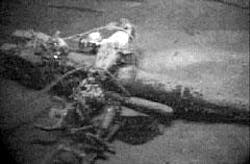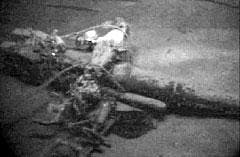A pipeline to history
Petroleum and warfare have been inextricably intertwined from the beginning.
Homer's Iliad cites the Trojans' use of catapults to hurl projectiles of flaming pitch, gathered from oil seeps, at Greek ships, according to Daniel Yergin in his book The Prize.
Yergin also recounts the historical pivot point when First Lord of the Admiralty Winston Churchill in 1911 committed the British navy to a then-controversial switch to Persian oil from British steam coal to assure the country's mastery of the seas amid a pre-World War I Anglo-German naval arms race.
The dependence of war machines on petroleum was especially pivotal in World War II. It has been argued that oil-poor Nazi Germany might not have lost the war had Adolf Hitler not made the ill-fated decision to march on Russia to seize the oil fields at Baku for a secure oil supply.
And, of course, the 1990-91 Persian Gulf crisis and war was all about oil. The list goes on.
Oil and war revisited
Even in a peacetime US there can be chance encounters that again bring together the oil industry and military history.
The discovery last May of a sunken German U-boat in the Gulf of Mexico came during a shallow-hazard and archeological survey of the seafloor prior to selecting a final route for the Okeanos natural gas pipeline project. BP PLC and Shell Oil Co. plan to install the line to transport gas from the Na Kika and Crazy Horse ultradeepwater fields currently under development. Such surveys are routinely required by the US Minerals Management Service to protect historically or archeologically significant sites.
The discovery was made by the Hugin-3000 autonomous remotely controlled vehicle, developed and operated by C&C Technologies Inc., Lafayette, La., under contract to BP and Shell. BP and Shell subsequently funded a video investigation of the U-boat and its last victim, the SS Robert E. Lee passenger freighter, with an ROV operated by Oceaneering Inc., Houston. The video clearly shows the U-166's conning tower and armament (see photo).
BP and Shell continue to work with the US and German governments to provide information about the two sunken vessels. The German government has declared the site a war grave and requested that it remain undisturbed. Both vessels are in 5,000 ft of water 45 miles off the Mississippi River delta.
Grey ghosts
At one time, Germany's U-boats were the terror of the seas, silent grey ghosts that devastated Allied shipping. Even the usually placid waters of the gulf were not immune from these submarine wolf packs. A total of 24 known U-boats patrolled the gulf during the war, sinking 56 Allied ships.
The U-166 sub sank 7,593 tons of Allied shipping on its first patrol in the gulf, fatally torpedoing the Robert E. Lee on July 30, 1942, and counting 25 passengers and crew members from that vessel among its victims. The Robert E. Lee was discovered nearby by a 1986 Shell seabed survey.
But such military successes often came at a terrible price for the U-boat crews, which themselves faced a horrific death toll-most U-boat sailors never came home.
Such was the case with the U-166 crew. All 52 crewman perished when a US Navy sub-chaser accompanying the Robert E. Lee sent the U-boat to the bottom with a depth charge.
The discovery clears up a mystery while it enshrines a grim irony. The U-166 had been thought to have been sunk by US Coast Guard aircraft 100 miles to the west. As it turns out, the Coast Guard aircraft had apparently bombed-but missed-the U-171 sub, which later was captured by Allied forces.
The sub-chaser apparently destroyed the U-166 without realizing it. It was the only U-boat sunk in the Gulf of Mexico, and its wartime saga has again come to light courtesy of the petroleum industry.

